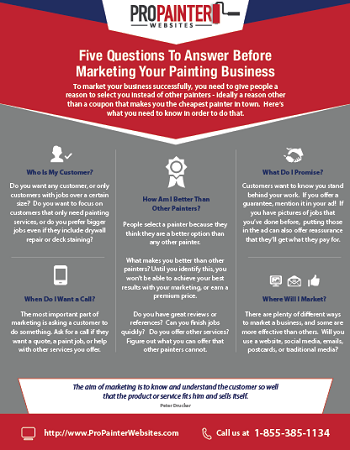Discover How Seasonal Variables Influence Industrial External Painting Success And Discover The Very Best Times To Guarantee Long Lasting Results For Your Task
Discover How Seasonal Variables Influence Industrial External Painting Success And Discover The Very Best Times To Guarantee Long Lasting Results For Your Task
Blog Article
Authored By-Carlson Whalen
When you're intending a business exterior paint task, seasonal elements can make or break your outcomes. You'll want to consider how temperature level and moisture effect paint application and drying out times. Choosing the right period can guarantee your paint sticks appropriately and lasts longer. But which periods are really the very best for this type of job? Allow's check out the crucial elements that can affect your job's success.
The Influence of Temperature on Paint Application
When you're planning an industrial external painting task, the temperature can considerably affect how well the paint sticks and dries out.
Preferably, you intend to repaint when temperatures range in between 50 ° F and 85 ° F. If it's too chilly, the paint may not treat effectively, bring about issues like peeling or splitting.
On the other side, if it's as well warm, the paint can dry out too quickly, avoiding correct adhesion and resulting in an irregular coating.
You ought to likewise consider the moment of day; morning or late afternoon uses cooler temperature levels, which can be a lot more desirable.
Always inspect the supplier's suggestions for the specific paint you're making use of, as they commonly give support on the excellent temperature range for optimum outcomes.
Moisture and Its Impact on Drying Times
Temperature level isn't the only environmental factor that influences your commercial exterior paint task; humidity plays a considerable role as well. High humidity degrees can slow down drying times considerably, affecting the general quality of your paint task.
When the air is saturated with moisture, the paint takes longer to treat, which can cause problems like inadequate attachment and a greater threat of mildew growth. If you're repainting on an especially damp day, be planned for prolonged wait times in between layers.
color of ceiling paint same as walls to check neighborhood weather conditions and plan appropriately. Ideally, go for moisture levels in between 40% and 70% for ideal drying.
Keeping these factors in mind guarantees your task stays on track and supplies an enduring coating.
Best Seasons for Commercial Exterior Painting Projects
What's the best time of year for your commercial exterior painting projects?
Spring and very early fall are generally your best options. During these periods, temperature levels are light, and moisture degrees are typically reduced, developing perfect conditions for paint application and drying out.
Prevent summer's intense heat, which can trigger paint to completely dry as well quickly, resulting in inadequate adhesion and finish. In a similar way, winter's cool temperatures can impede proper drying and treating, running the risk of the longevity of your paint job.
Aim for days with temperature levels in between 50 ° F and 85 ° F for ideal outcomes. Bear in mind to inspect the regional weather prediction for rainfall, as wet conditions can destroy your job.
Preparation around these factors guarantees your painting task runs efficiently and lasts longer.
Verdict
In conclusion, planning your industrial external painting projects around seasonal factors to consider can make a considerable distinction in the end result. By scheduling job during the optimal temperature levels and humidity degrees, you'll make certain much better adhesion and drying times. apainter in mind to keep an eye on neighborhood weather forecasts and choose the right time of year-- spring and early loss are your best options. Taking these steps will certainly assist you accomplish a durable and professional finish that lasts.
